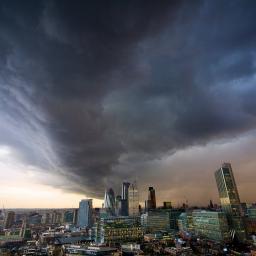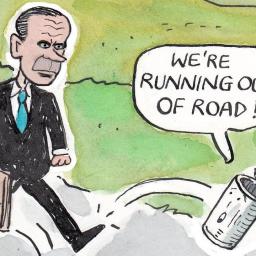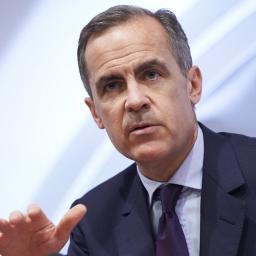 |
by Jill Treanor on (#16N17)
European Central Bank has four key measures to get money into the financial system – what are they and will they work?What has the European Central Bank done?Mario Draghi, the ECB president, has announced four key measures:Related: ECB cuts eurozone interest rate to zero to jump-start economy Continue reading...
|
| Link | http://feeds.theguardian.com/ |
| Feed | http://feeds.theguardian.com/theguardian/business/economics/rss |
| Updated | 2025-12-26 21:00 |
 |
by Larry Elliott Economics editor on (#16MX3)
Organisation’s chief economist dismisses Boris Johnson’s argument that long-term benefits of leaving outweigh costsThe west’s leading economic thinktank has provided backing for David Cameron’s pro-EU stance by warning that a UK vote to leave the union would cause lasting damage and would harm the rest of the world.Catherine Mann, the chief economist at the Organisation for Economic Co-operation and Development, said a vote against remaining in the EU would be “bad for the UK, bad for Europe and bad for the global economyâ€.Related: The EU referendum: a guide to the UK's biggest political decision of the century Continue reading...
|
by Andrew Sparrow on (#16G5S)
Rolling coverage of all the day’s political developments as they happen, including David Cameron and Jeremy Corbyn at PMQs and the Commons debate and vote on Sunday trading
by Larry Elliott on (#16HR5)
These contracts are a symbol of an insecure labour market in which the balance of power is tilted decisively in favour of employersThe phrase “zero-hours contract†was virtually unheard of in Britain a decade ago. That’s not surprising, since in the years leading up to the start of the financial crisis in 2007 few people were employed on one.Today, after an eightfold increase in the past 10 years, everybody knows what a zero-hours contract is and what it represents. It is a symbol of an increasingly insecure labour market in which the balance of power is tilted decisively in favour of employers.Related: What are zero-hours contracts? You asked Google – here’s the answer | Dawn Foster Continue reading...
 |
by Graeme Wearden on (#16FSW)
All the day’s economic and financial news, including signs that the UK economy weakened last December, before picking up again
|
by Larry Elliott Economics editor on (#16GT4)
British manufacturing bounced back in January but slump in oil prices continue to affect industrial productionBritain’s factories bounced back from a dismal 2015 to post a solid increase in output in the first month of the new year, official figures have shown.The Office for National Statistics said manufacturing production rose by 0.7% between December and January, bringing to an end three successive months of decline. Continue reading...
 |
by Nicolai Petro on (#16G8N)
With country at risk of becoming a failed state, Kiev must recognise that economic survival depends on Moscow not the westIn January Ukraine’s president, Petro Poroshenko, congratulated the country on surviving its first winter without buying Russian gas. It had instead bought European gas which, as Poroshenko pointed out proudly, was 30% more expensive.
|
 |
by Larry Elliott Economics editor and Nick Fletcher on (#16E18)
Drops in import and export figures reverse recent rally in oil and metal prices and rekindle concerns about China’s slowdownShares in mining companies fell heavily in the City on Tuesday after the biggest fall in China’s exports in almost seven years rekindled concerns about the impact of a slowdown in the world’s second-biggest economy on the rest of the world.Official figures released in Beijing showed that exports in February were down 25.4% on a year earlier, the worst performance since May 2009, the trough of the global recession.Related: IMF urges action to prevent 'economic derailment' - as it happened Continue reading...
|
 |
by Letters on (#16E1Q)
While your in-depth quantification of the economic betrayal of “generation Y†(Millennials, 8 March) is timely and welcome, setting it as an opposition between the young and pensioners is to miss the real issue. A cursory reading of Thomas Piketty’s Capital in the Twenty-First Century would lead one to expect such a transitional effect. As the balance of power between returns on capital and income shifted back towards the owners of wealth, it disproportionately hit those entering work. It is easier to deny decent wages, job security and pensions to those joining than it is to take them away from those who already have them.That shift in power was orchestrated through state power, including trade union legislation, and the lifting of controls on capital movement, by governments. Shifting the focus from the super-rich, the beneficiaries of that political project, to a generation fortunate in their time of birth is misleading. The civilised pensions will die with that generation, and the wealth in property of the middle classes will quickly dissipate as it is inherited down generations.
|
by Graeme Wearden (until 2.20pm) and Nick Fletcher (n on (#16BWG)
Growth-friendly fiscal policies are needed to avert a new crisis, warns International Monetary Fund
 |
by Edward Helmore in New York on (#16D8G)
The figures reflect a steady decline in bonuses since the financial crisis in 2008 and the implementation of new controls on how bonuses are awardedWall Street bonuses fell 9% to an average of $146,200 in 2015, driven down by a “challenging year in the financial markets†and new regulations, according to New York state comptroller Thomas DiNapoli.The decline in the banking bonuses was the result, in large part, of a 10.5% decline in profits on Wall Street to $14.3bn in 2015, according to the report from the watchdog. Continue reading...
|
 |
by Frances Ryan on (#16CGX)
It’s in the government’s interests to keep promoting the very myths that keep the benefit fraud hotline ringing – and distract us from real social problemsI can’t decide what is most disturbing: that more than 85% of allegations of benefit fraud put forward by the public over the past five years have been false, or that this is about almost 900,000 out of more than a million cases.That isn’t a handful of mistaken or malicious individuals. It’s a widespread anti-benefit mindset that – over five years of austerity – has rooted itself in British culture: through Benefits Street type-television, the rhetoric of politicians, and the pages of national newspapers. Continue reading...
|
 |
by Australian Associated Press on (#16B1H)
Spot prices for iron ore explode by 18.5%, their biggest single gain since daily pricing began in 2008The Australian dollar has surged to an eight-month high after a “spectacular†jump in iron ore prices.At 7am on Tuesday, the local unit was trading at US74.70c, up from US74.0c on Monday.Related: Australian shares set to open higher on Monday after surge in base metal price Continue reading...
|
 |
by Katie Allen on (#16AZQ)
Those who become mothers before 33 earn 15% less than peers who do not, finds study marking International Women’s DayWomen who become mothers before 33 earn 15% less than their peers who have not had children, the Trades Union Congress is to say as it calls for better childcare support to tackle the “motherhood pay penaltyâ€.The TUC’s analysis to mark International Women’s Day on Tuesday says the disparity is down to younger mothers being more likely to have had a significant period out of work or working part-time, before returning to full-time work when their children are older. Continue reading...
|
 |
by Letters on (#16AC7)
Your reporting of npower’s problems (Npower to shed 2,500 jobs after mass departure of customers, 7 March) focuses on the anticipated job losses. I have every sympathy for those who will be affected, but jobs are constantly created and lost in a market economy – it’s what competition does. In this case, you might have noted how many staff are already employed by the new competitors who have made life difficult for npower. Politicians, regulators and consumer organisations have been frustrated by the apparent reluctance of consumers to change suppliers of energy (and other essential services where the market has been liberalised and/or privatised). A small celebration, then, for the 200,000 who acted on their dissatisfaction with npower. Banks and others take note.
|
by Editorial on (#16AC9)
George Osborne’s fixation with flattering the books is jeopardising much-needed investment in the UK’s future power generationIt is a good thing this winter has been so mild: the lights didn’t go out. But there will be another potential crisis next winter, and the one after that, as Britain’s geriatric coal and nuclear power stations are slowly taken out of production, not least to meet important new obligations to decarbonise electricity supply by 2020. Anyone looking for the catastrophic consequences of failing to invest in a timely way in infrastructure, and fixating instead on borrowing off the books behind the taxpayer’s back, need look no further.This is not the first UK government that has got energy wrong. Tony Blair dithered for nearly 10 years before giving the go-ahead to a new generation of nuclear power, during which time much expertise had wasted away. The plan for a third generation European pressurised reactor (EPR) in Somerset, to be known as Hinkley Point C, was approved five long years ago. But George Osborne’s obsession with flattering the books has condemned this questionable and costly project to raising cash on the open market. It involves still unproven technology, EDF – which has the contract to build the new power station – is heavily indebted already. The market doesn’t much care to invest despite – or perhaps because – the UK, Chinese and French governments are all heavily involved. According to some reports, two thirds of the funding is yet to be raised. Continue reading...
by Graeme Wearden (until 2.30) and Nick Fletcher on (#16838)
All the day’s economic news, as finance ministers consider the deadlock between the Greece government and its lenders
 |
by Phillip Inman Economics correspondent on (#169J3)
Metal’s highest rise since 2009 on back of China’s plans to boost growth as oil prices also continue to recoverBrent crude oil has climbed back above $40 a barrel, as the recovery in commodity prices continued with iron ore posting a record rise of nearly 20%.Commodities prices have jumped in the last month on expectations that Beijing will work more aggressively to boost growth after two years of faltering manufacturing output. Continue reading...
|
 |
by Caelainn Barr on (#168EK)
Guardian journalists were given access to the world’s largest income database in order to get a clear and detailed picture of the generation gapLuxembourg is not known for its world-beating exports. You could cross the country by car in an hour and hardly know it was there, unless you travelled by taxi, in which case it would leave a large hole in your wallet.But if you stopped a stone’s throw from France and approached a cluster of colourful blocks that rise out of an old industrial site, you would be close to one of the country’s best-kept secrets.Related: Generation Y: a guide to a much-maligned demographicRelated: Revealed: the 30-year economic betrayal dragging down Generation Y’s income Continue reading...
|
 |
by Clár Nà Chonghaile on (#168AC)
After years of political turmoil, Ivory Coast’s budget minister hopes booming economy and improved infrastructure will create climate to attract investmentAs many economies in Africa wrestle with the consequences of a slowdown in China and depreciating currencies, Ivory Coast has bucked the trend. The country is enjoying strong growth and focusing on infrastructure projects, job creation, and improving its business climate to win back investors after years of political paralysis.Leading the economic charge is former Goldman Sachs trader Abdourahmane Cissé, the 34-year-old budget minister, who says the world’s top cocoa producer is strong enough to weather external shocks, while stability is almost guaranteed.Related: Boom town: Abidjan flourishing as Ivory Coast heads to polls – in picturesRelated: Does the international criminal court help to end conflict or exacerbate it? | Alex VinesRelated: Yaya Touré: Africa's youth can be driving force to win the development gameRelated: Ivory Coast president tours country's first chocolate factory Continue reading...
|
 |
by Katie Allen Economics reporter on (#1677R)
Analysis finds gap of £5,732 or 24% in average annual salaries in UK, prompting calls for more to be done to tackle problemWomen are likely to earn £300,000 less than men over their working lives, according to a new analysis that has sparked fresh calls for more shared parental leave to close the UK’s stubborn gender pay gap.Before International Women’s Day on Tuesday, figures show a gap of £5,732, or 24%, in average full-time annual salaries between women and men – more than four decades after the Equal Pay Act of 1970 was introduced.Related: Website aims to get female teachers back to work after pregnancy Continue reading...
|
 |
by Agence France-Presse on (#167S2)
The Bank of International Settlements warns that trouble has been brewing ‘a long time’ but central bank options are dwindlingA fragile calm in global financial markets has given way to all-out turbulence, the Bank of International Settlements has said, warning of a “gathering storm†which has long been brewing.
|
 |
by Katie Allen on (#1677P)
Signs of improvement in industry after dismal 2015, according to manufacturers’ organisationUK manufacturers are hopeful they can eke out some growth this year after the 2015 slump, but worries about the world economy will continue to weigh on hiring and investment plans, a survey of the sector found.
|
 |
by Jill Treanor City editor on (#1677M)
Rules designed to hold executives to account come into effect alongside new offence of failing to prevent bank collapseThe City’s top regulator has said a new system designed to hold bank executives to account is “not about trying to get heads on sticksâ€.The new regulatory regime, which came into force on Monday and holds top executives responsible for failures in banks, has been watered down since it was first proposed, though Tracey McDermott, the acting head of the Financial Conduct Authority, insisted it would still have a major impact.Related: Jeremy Corbyn claims City firms treat ordinary workers like 'cash cows' Continue reading...
|
by William Keegan on (#165BB)
David Cameron is under fire from the press and Tory MPs. It would become him to act more courteously to the pro-Europeans on the other side of the houseThe cuts are getting closer to home. Last weekend, an 86-year-old near neighbour died in a house fire when he might have been rescued had the fire brigade not been suffering from a programme of cutbacks.One can never be sure in such cases, but the London secretary of the Fire Brigades Union, Paul Embery, pointed out the fire engines were significantly later on the scene than they should have been. Thanks to the cuts to local authority budgets which are an integral feature of George Osborne’s austerity policy, and reductions in the fire service being energetically pursued by the mayor of London, the borough of Islington has reportedly lost 60% of its fire cover in the past three years. The Islington Tribune – a newspaper David Cameron says he regularly subscribes to – reports that this leaves “just two engines for a borough with a population of more than 200,000â€. Continue reading...
by Australian Associated Press on (#164KV)
Oil price rose 4% after Australian market shut on Friday, while gold and iron ore both lifted by about 1% and Wall Street closed higherThe Australian share market is expected to open up to 40 points higher on Monday on the back of strong surges in oil and base metal prices.And all eyes will be on interest rate signals at home and abroad over the coming week.Related: Commonwealth bank admits failing customers over heart attack claimsRelated: ANZ to ‘vigorously defend’ interest rate rigging case Continue reading...
 |
by Katie Allen on (#162H4)
We look back over seven years of ultra-loose monetary policySeven years ago on Saturday (5 March), the Bank of England slashed interest rates to a record low of 0.5%. At the time, the cut and plans to pump billions of pounds of electronic money into the economy seemed like an emergency measure to cushion the UK from the global financial crisis. But borrowing costs are still at their record low and amid warnings that a new global slump is around the corner, Bank policymakers show no signs of raising rates any time soon.We look back over seven years of ultra-loose monetary policy: Continue reading...
|
 |
by Michael Paarlberg on (#161QT)
There is a disconnect between what indicators say and what workers feel. A hard look at the numbers shows all isn’t well
|
by Katie Allen on (#1614G)
Share index turnaround of 12% since February contributes to mood of cautious optimism in CityWas that it? The year began with warnings to sell up and hunker down for another financial crisis. But now investors have been left scratching their heads after the FTSE 100 enjoyed its third week of gains to soar back to where it started 2016.The index rallied 1% on Friday to close at 6,199.43, just shy of the 6,242.32 level at which it opened the year and above the 6,093 where it closed on the first trading day of the year. Continue reading...
 |
by Graeme Wearden on (#15Z1M)
America’s non-farm payroll beats forecasts, but slight fall in average earnings ‘taints’ the picture
|
 |
by Katie Allen on (#15XDF)
Service sector slowdown caused by financial market turmoil and fears of Brexit are likely to keep rates at historic lowThe UK is set for another year of record low interest rates, economists have predicted, following news that the dominant services sector suffered a sharp slowdown last month.Worries about the EU referendum, turmoil on financial markets and a faltering global recovery all took their toll on confidence among the UK’s services businesses and knocked their growth to a three-year low, according to a closely watched survey.
|
 |
by Katie Allen on (#15X0R)
GDP fell 3.8% in 2015 as collapse in oil prices, rising inflation and political turmoil took tollBrazil’s economy suffered its worst slump for quarter of a century last year as a global commodity rout, a domestic political crisis and rising inflation forced businesses to slash spending and jobs.Related: Brazil: Moody's becomes third rating agency to label country's debt junk Continue reading...
|
 |
by Nathan Schneider on (#15WST)
As his candidacy falters, where can that rapturous energy be channelled? Into building an economy that serves ordinary people, and excludes the 1%On Tuesday night I attended a Democratic caucus in a ballroom at the University of Colorado Boulder, where hundreds of college students rallied for the man they hope will become the oldest president in history. Speeches for Hillary Clinton received polite applause, while any reference to Bernie Sanders caused a short period of rapture.
|
 |
by Katie Allen on (#15VP6)
Business activity and new work are weakest for nearly three years, mirroring gloomy reports in China and eurozoneWorries about the EU referendum, turmoil on financial markets and a faltering global recovery have hit confidence among the UK’s services businesses and knocked their growth to a three-year low.A closely watched survey of companies in the UK’s biggest sector, which covers hairdressers to insurers, showed business activity and new work both expanded at the slowest rate since March 2013.Related: UK service companies anxious about year ahead Continue reading...
|
 |
by Press Association on (#15TBG)
Labour leader tells business leaders it was ‘extractive’ banks that drove the economy to the ‘point of collapse’ in 2007Jeremy Corbyn is to accuse City firms of treating ordinary workers like a “cash cow†as he calls for more state investment.In a speech to business bosses, the Labour leader will say it was the “extractive†banking industry rather than the government that drove the economy to the “point of collapse†in 2007.Related: What the bank results tell us about their and UK economy's healthRelated: Why on earth would HSBC leave a country that gives banks an easy ride? | Prem Sikka Continue reading...
|
by Greg Jericho on (#15SGF)
Despite the end of the boom, resources is still the most important sector, ably supported by building houses and buying things to put in themThe early signs for the GDP figures were not good – capital expenditure was weak and the outlook terrible, and on Tuesday the latest balance of payments figures showed that net exports would contribute nothing to GDP growth in the December quarter.But then the figures came out on Wednesday showing that in seasonally adjusted terms the economy grew by 0.6% in December and a very solid 3.0% for the year. Continue reading...
by Graeme Wearden (until 2.pm) and Nick Fletcher on (#15QBE)
All the day’s economic and financial news, as markets suffer another volatile day
 |
by Hilary Osborne on (#15S2E)
Loose monetary policy has ‘annihilated’ returns on cash, but mortgage borrowers and investors have benefitedSeven years of quantitative easing (QE) and record low interest rates have cost savers an estimated £160bn, but supported strong increases in the prices of property, stocks and bonds.Analysis by financial firm Hargreaves Lansdown suggests that up to £106bn is being held in accounts paying no interest, as loose monetary policy has “annihilated†returns on cash. Continue reading...
|
by Ian Williams on (#15RX0)
What are the subtexts behind the doom-laden reports about the state of the NHS? Continue reading...
 |
by Julia Kollewe on (#15RQ0)
World’s largest asset manager says vote to leave EU could trigger lower growth and investment in BritainThe world’s largest fund manager, BlackRock, has warned that a Brexit vote would damage Britain’s economy by leading to lower growth and investment, and possibly higher unemployment and inflation.In a gloomy analysis, the US asset manager said a decision to leave the EU would also hit the pound and UK equities, as well as damaging Britain’s financial industry, the London property market and the fashion industry. Continue reading...
|
by Nouriel Roubini on (#15RET)
Two dismal months for financial markets may give way in March to a relief rally for assets such as global equitiesThe question I am asked most often nowadays is this: are we back to 2008 and another global financial crisis and recession?My answer is a straightforward no, but that the recent episode of global financial market turmoil is likely to be more serious than any period of volatility and risk-off behaviour since 2009. This is because there are now at least seven sources of global tail risk, as opposed to the single factors – the eurozone crisis, the Federal Reserve “taper tantrum,†a possible Greek exit from the eurozone, and a hard economic landing in China – that have fuelled volatility in recent years. Continue reading...
 |
by Martin Farrer and agencies on (#15PN9)
Dollar rises after output expanded by a better than expected 0.6% in the December quarter to give strong annual growthAustralia’s economy has weathered the end of the mining boom more strongly than expected after official figures showed that it grew by 3% in 2015.Related: Australia's investment figures stink, but one area smells a bit sweeter | Greg Jericho Continue reading...
|
 |
by Julia Kollewe on (#15PGM)
Sales of super-yachts rose 40% last year despite number of millionaires and ultra rich falling, according to wealth reportThe global super rich continued to splash out on super-yachts and luxury goods last year, despite a decline in their overall wealth in the wake of financial market turmoil.According to the latest wealth report from estate agents Knight Frank, published on Wednesday, sales of super-yachts – boats longer than 24 metres – soared 40% in 2015, with the rich roaring off to ever more far-flung destinations, such as the Antarctic and outposts in Asia, rather than their traditional ports of call in the Mediterranean and the Caribbean.Related: World's 20 richest people are $70bn poorer, says Forbes Continue reading...
|
 |
by Phillip Inman Economics correspondent on (#15NV0)
Factory output contracted in China and UK last month, while growth slowed in other major economies including USChina’s factories have stumbled through last month’s new year celebrations to join a broad decline in manufacturing across Europe and the US, adding further evidence of sharp downturn in the global economy since the beginning of the year.Factory output contracted in China and the UK during February while growth slowed in France, Germany, Italy and the US to indicate that businesses and consumers remain wary of committing themselves to large orders while the direction of global trade remains uncertain.
|
 |
by Letters on (#15NP6)
The debate on the EU referendum has thus far repeated that of the Scottish independence referendum – unlike parliamentary elections, where debate is (or can be) on policy built on evidence, a single-issue referendum on a constitutional/economic issue risks descending into an exchange of guesswork built on anecdote (Boris has just launched his latest myth, 27 February).I suggest that it would better if both sides provide a manifesto with policy detail and projected consequences for our country five and/or 10 years from now. The out campaign manifesto should, among other things, clarify which model is proposed for UK-EU relations (eg the Norway model? Or a trading relationship as with a comparably-sized economy like, say, South Korea? Or a new and unique model – to be specified?); and which specific EU laws would be repealed with newly re-established exclusive sovereignty, and with what effect? Continue reading...
|
 |
by Graeme Wearden (until 2pm) and Nick Fletcher on (#15KEZ)
All the day’s economic and financial news, as manufacturers across the globe suffer a poor February
|
by Phillip Inman and Graeme Wearden on (#15N1F)
Factories suffered decline in growth of domestic orders in February coupled with a second month of falling exportsBritain’s factories suffered a decline in growth of domestic orders in February which, coupled with a second month of falling exports, saw them register their worst performance in almost three years.The weakening picture, which also saw a second month of declining employment, comes after George Osborne warned of a cocktail of threats and gathering storm clouds in the world economy wreaking havoc on global trade.Related: March of the makers remains a figment of Osborne's imagination Continue reading...
 |
by Michelle McGagh on (#15M7J)
The average British person is consuming fewer things. Perhaps we are slowly beginning to realise that less really is moreBritain has fallen behind most of Europe when it comes to consumption, but it shouldn’t be seen as a negative; we could be at the forefront of a positive trend for more thoughtful purchasing.Recent data from the Office for National Statistics shows the average person is consuming fewer resources than they were a decade ago, recording a fall from 15 tonnes of material in 2001 to 10 tonnes in 2013. We also use less material per person than any other European country bar Spain.Related: UK consumes far less than a decade ago – 'peak stuff' or something else?Related: Why I'm buying nothing for a year – no clothes, no holidays, no coffee ... Continue reading...
|
 |
by Katie Allen on (#15KWW)
Usdaw calls for talks with British Retail Consortium amid concerns women could bear brunt of predicted 900,000 job lossesFemale workers will be disproportionately hit if a prediction of almost 1 million job losses from the UK’s retail sector becomes a reality, the industry’s trade union has warned.Related: UK retail sector predicted to cut 900,000 jobs Continue reading...
|
 |
by Katie Allen on (#15HW8)
Bloc slips into negative inflation for third time in a year prompting fears eurozone is heading for deflationThe European Central Bank is under growing pressure to step up support for the eurozone’s flagging economy after the bloc slipped back into negative inflation in February.The surprise drop in prices marked the third time in a year that inflation has turned negative, fanning fears that the eurozone is headed for all-out deflation – a sustained period of falling prices. The news cemented market expectations that the ECB would use its meeting next week to inject fresh cash into the single currency bloc and to cut a key interest rate further into negative territory.Related: Central bankers on the defensive as weird policy becomes even weirder Continue reading...
|